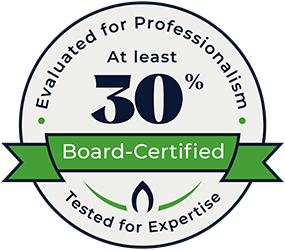
The Surprise Side Effect of COVID: Community Associations Getting Things Done
As a Community Association attorney, one of the unintended benefits that we've seen through COVID is the ability for people to participate in their community associations remotely.
Typically, one of the impediments that community associations have historically faced is apathy. There are always those folks who don't show up, therefore you can't get anything done simply due to a lack of participation.
However, through COVID, once everything went remote, including association operations, people started to participate more, which allowed for the opportunity for associations to start proposing a number of important things that could realistically get passed. One of the mechanisms we've seen an uptick in is the use electronic voting resolutions to allow people to participate and vote in an electronic fashion. Again, this removes some of the apathy because there's no longer the need to show up at a meeting at a certain time to cast a vote. People can do it at their leisure in advance.
Overall, as community association lawyers, we've found that participation as a whole through COVID, and now turning the corner post COVID, has seen a significant uptick and is finally allowing associations to actually get meaningful work done that before this, they just simply were unable to do.
Having Trouble Engaging Homeowners in Your Community Association? Check out these helpful tips from community association management giant, GrandManors:
1. Welcome New Homeowners. A welcome package from the community association should include a letter of welcome that you or another HOA board member has signed, information about how they can get involved in the HOA, and a small gift. The gift should have a connection to your community, such as a gift card to a nearby coffee shop, a refrigerator magnet with key community information, or a coffee mug with the HOA logo.
2. Organize Social Events. Consistently, studies have shown most Americans don't know their neighbors. Your homeowners have more motivation to get involved if they're at least acquainted with their neighbors. Your association can foster social connections by hosting at least one community-wide social event each year. Some associations throw a holiday party or a summer picnic. We have put together ways to encourage attendance to community events.
3. Create Opportunities for Homeowners to Participate. Some homeowners would like to be more involved, but they don't see an avenue to engage. Creating volunteer committees gives homeowners a way to engage that has clear expectations. The board can even use committees to implement some of these homeowner engagement strategies. Your community association could have committees for welcoming new neighbors, events, architectural review, or beautification.
4. Communicate Often. The HOA needs to stay in regular communication with homeowners. Although taking a flyer or newsletter to each door still works, modern technology like social media, emails, and texts are more efficient. Social media has the advantage of making easy for homeowners to become part of the conversation instead of just receiving announcements.
5. Show Appreciation for Engagement. Getting homeowners involved is just the beginning. You have to keep them engaged. Thanking volunteers is one way to do that. You may want to recognize them at the annual meeting or a community event. The board may want to send a thank-you note or gift if volunteers have been exceptional in sharing their time and talent with the association.
6. Ask Homeowners to Get Involved. This may seem obvious, but you may be surprised by the results. Sometimes the only barrier to engagement is no one ever asked.
7. Survey Your Homeowners. If your HOA has the resources, a survey of your homeowners can yield valuable information. An anonymous survey encourages transparent responses. Your questions could cover what engagement opportunities would be motivating, what their barriers to participation are, etc.
8. Share Accomplishments. People like to be a part of successful organizations. Once a year the board should inform homeowners of what the association accomplished in the past 12 months.
9. Respect Time. Homeowners will be reluctant to get involved if board members have a reputation for not respecting their time. Association meetings need to start and end on time. A realistic timeline for a committee reflects volunteers are handling their assignment alongside their other commitments.
10. Remember the Value of Face-to-Face Conversations. Reaching out in person may be the most effective means of getting homeowners involved. It's more time-consuming than the other methods, but you will find it's time well-spent as your association grows its number of active homeowners.”

Author Daniel A. Weber is an Associate Attorney at Sachs Sax Caplan practicing within the Community Associations Practice Group.
Prior to joining our law firm, Mr. Weber practiced community association real estate and business law, and brings extensive knowledge and expertise in the operations and management of community associations.He has handled a wide range of matters including interpreting and amending governing documents, litigating covenant enforcement cases, prosecuting lien foreclosure actions, reviewing and negotiating contracts, and all manner of general counsel work.
When you subscribe to the blog, we will send you an e-mail when there are new updates on the site so you wouldn't miss them.

Sachs Sax Caplan, P.L. is proud to be recognized by The Florida Bar for our commitment to hiring and developing Board Certified Attorneys.

